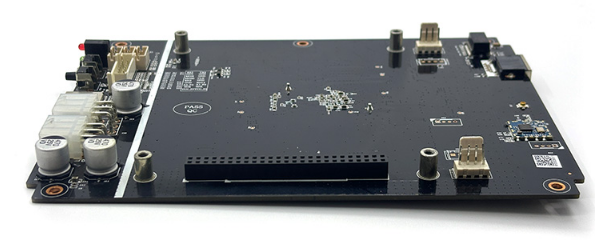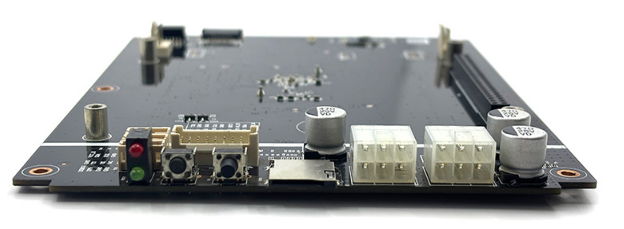How to configure WiFi on iPollo V1 mini control board for mining connectivity?
May 12, 2025
How to Configure WiFi on iPollo V1 Mini Control Board for Mining Connectivity?
Cryptocurrency mining has evolved into a highly technical and competitive industry, where every component of the mining rig plays a critical role in ensuring efficiency, profitability, and operational continuity. Among these components, the control board stands out as the central hub that manages data flow, processing, and connectivity. The iPollo V1 mini control board is a standout solution designed specifically for Ethash algorithm mining, offering advanced features such as WiFi connectivity, optimized memory architecture, and energy-efficient performance. In this article, we’ll explore how to configure WiFi on the iPollo V1 mini control board, ensuring seamless connectivity for your mining operations.
Understanding the iPollo V1 Mini Control Board
Before diving into the WiFi configuration process, it’s essential to understand the capabilities and advantages of the iPollo V1 mini control board. This compact yet powerful component is engineered to handle the demanding requirements of Ethereum mining, delivering a consistent hashrate of 280MH/s (±10%) while operating at an efficient 220W (±10%). Its 6.0GB memory architecture, with support for a 5.8GB DAG size, ensures compatibility with current and future Ethereum mining needs.
One of the standout features of the iPollo V1 mini control board is its WiFi connectivity, which allows miners to integrate their rigs into existing networks without the need for cumbersome Ethernet cables. This feature not only simplifies setup but also enhances flexibility in deployment, making it ideal for both small-scale and large-scale mining operations.
Why WiFi Connectivity Matters in Mining Operations
In the world of cryptocurrency mining, connectivity is crucial. A stable and reliable network connection ensures that your mining rig can communicate effectively with the blockchain, submit shares, and receive updates without interruption. Here’s why WiFi connectivity on the iPollo V1 mini control board is a game-changer:

- Flexibility in Deployment: WiFi eliminates the need for physical Ethernet connections, allowing you to place your mining rigs in optimal locations without worrying about cable management.
- Scalability: For large-scale operations with multiple rigs, WiFi simplifies network integration, reducing the complexity of wiring and infrastructure.
- Reduced Downtime: A stable WiFi connection minimizes the risk of disconnections, ensuring uninterrupted mining operations and maximizing profitability.
- Ease of Monitoring: WiFi enables remote monitoring and management of your mining rigs, allowing you to track performance and make adjustments from anywhere.
Step-by-Step Guide to Configuring WiFi on the iPollo V1 Mini Control Board
Configuring WiFi on the iPollo V1 mini control board is a straightforward process. Follow these steps to ensure a seamless setup:

Step 1: Access the Control Board Interface
- Connect your computer or mobile device to the same local network as the iPollo V1 mini control board.
- Open a web browser and enter the IP address of the control board. This information is typically provided in the user manual or can be found using a network scanning tool.
- Log in to the control board’s interface using the default credentials (usually “admin” for both username and password). Be sure to change these credentials after the initial setup for security purposes.
Step 2: Navigate to the WiFi Settings
- Once logged in, locate the Network Settings or WiFi Configuration section in the control panel.
- Select the option to enable WiFi connectivity.
Step 3: Scan for Available Networks
- Click on the Scan button to search for available WiFi networks within range.
- A list of detected networks will appear. Select your preferred network from the list.
Step 4: Enter WiFi Credentials
- Enter the SSID (network name) and password for your WiFi network.
- Ensure that the security type (e.g., WPA2) matches your network’s configuration.
Step 5: Save and Apply Settings
- Click Save or Apply to save the WiFi configuration.
- The control board will attempt to connect to the specified network. Once connected, the status will be displayed in the interface.
Step 6: Verify Connectivity
- Confirm that the iPollo V1 mini control board is successfully connected to the WiFi network by checking the network status in the control panel.
- Test the connection by accessing the control board interface from another device on the same network.
Tips for Optimizing WiFi Performance
To ensure optimal WiFi performance for your mining operations, consider the following tips:

- Position Your Router Strategically: Place your WiFi router in a central location to ensure strong signal coverage for all mining rigs.
- Use a Dual-Band Router: If possible, use a dual-band router that supports both 2.4GHz and 5GHz frequencies. The 5GHz band offers faster speeds and less interference.
- Minimize Interference: Keep your mining rigs away from devices that may cause interference, such as microwaves, cordless phones, and other electronic equipment.
- Update Firmware Regularly: Ensure that both your router and iPollo V1 mini control board are running the latest firmware to benefit from performance improvements and security patches.
- Monitor Network Performance: Use network monitoring tools to track bandwidth usage and identify potential bottlenecks.
Real-World Applications and Benefits
The WiFi connectivity feature of the iPollo V1 mini control board translates into tangible benefits for mining operators:
- Small-Scale Miners: For hobbyists or small-scale miners, WiFi simplifies setup and reduces clutter, making it easier to manage a single rig or a small cluster.
- Large-Scale Operations: In industrial mining farms, WiFi enables scalable deployment, allowing operators to add new rigs without the hassle of additional wiring.
- Remote Locations: Miners operating in remote or unconventional locations can leverage WiFi to connect their rigs to the internet without relying on physical infrastructure.
Conclusion
The iPollo V1 mini control board is a powerful and versatile component that brings advanced features like WiFi connectivity to the forefront of cryptocurrency mining. By following the steps outlined in this guide, you can easily configure WiFi on your control board, ensuring seamless connectivity and optimal performance for your mining operations. Whether you’re a small-scale miner or managing a large-scale farm, the iPollo V1 mini control board offers the reliability, efficiency, and flexibility needed to stay competitive in the ever-evolving world of cryptocurrency mining.

By leveraging its advanced data processing capabilities, optimized memory architecture, and energy-efficient design, the iPollo V1 mini control board is not just a tool but a strategic asset for maximizing your mining profitability. So, take the time to configure your WiFi settings correctly, and enjoy the benefits of a streamlined and efficient mining operation.